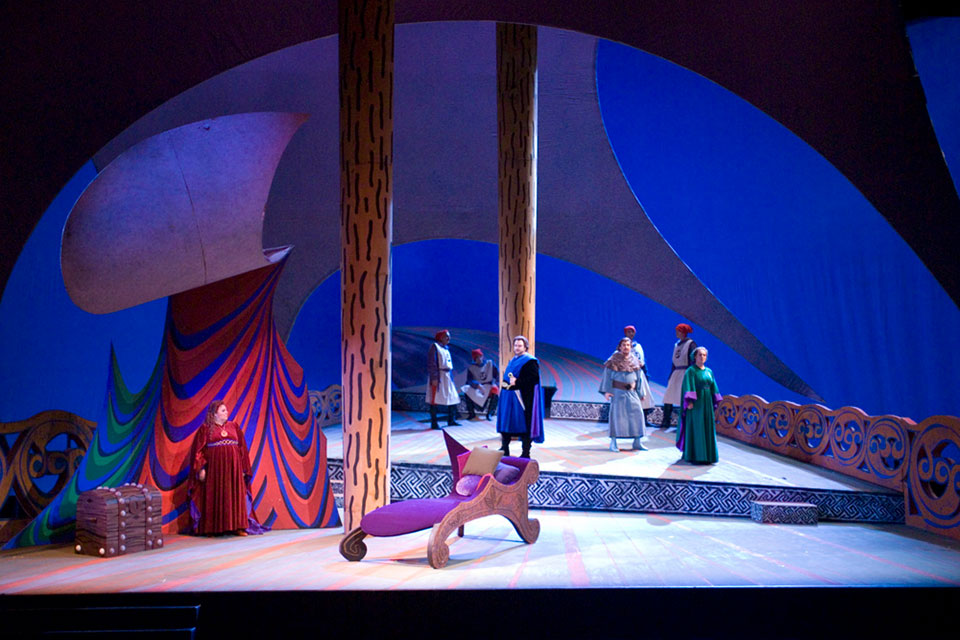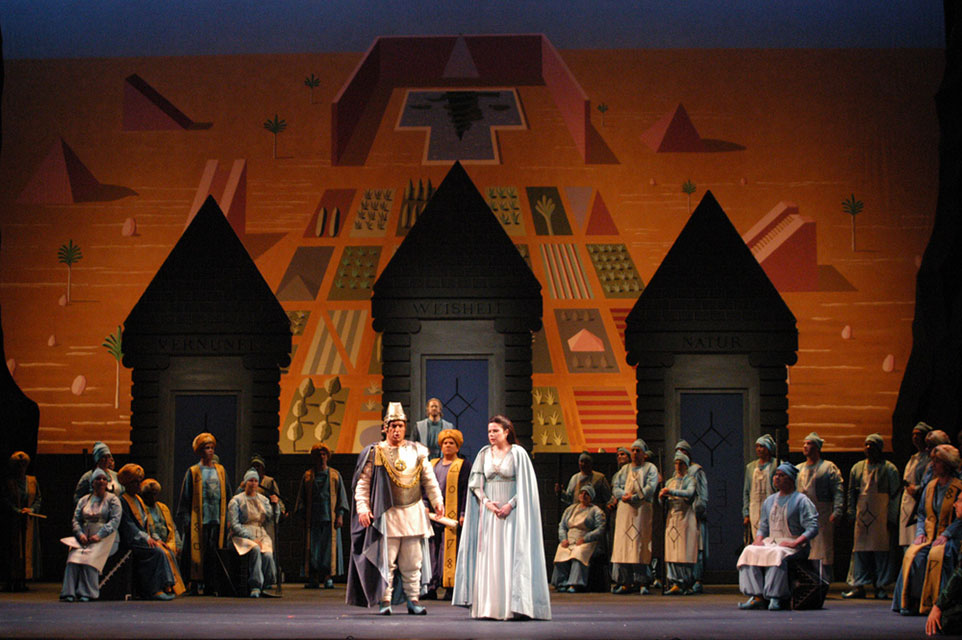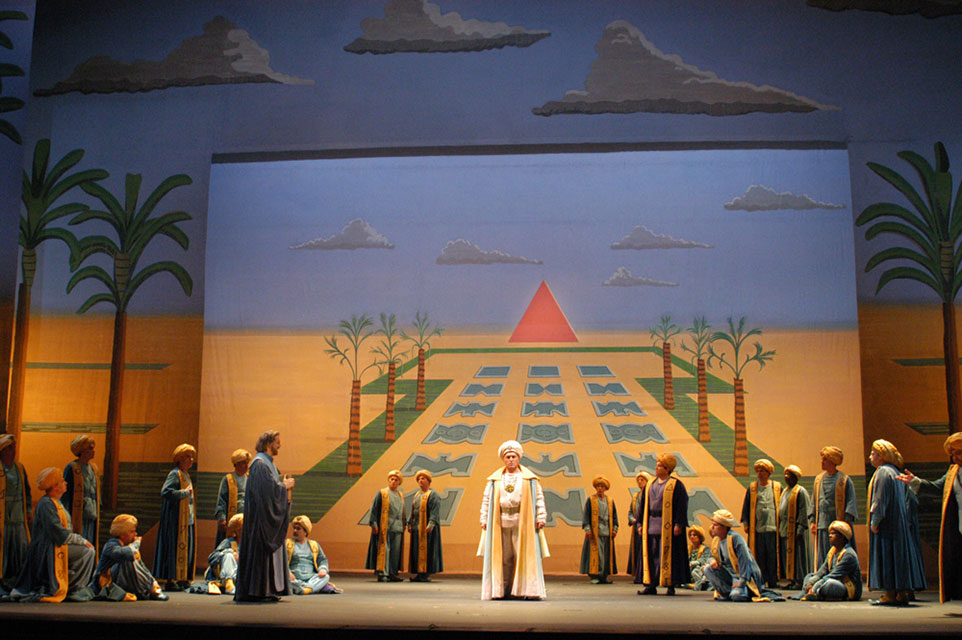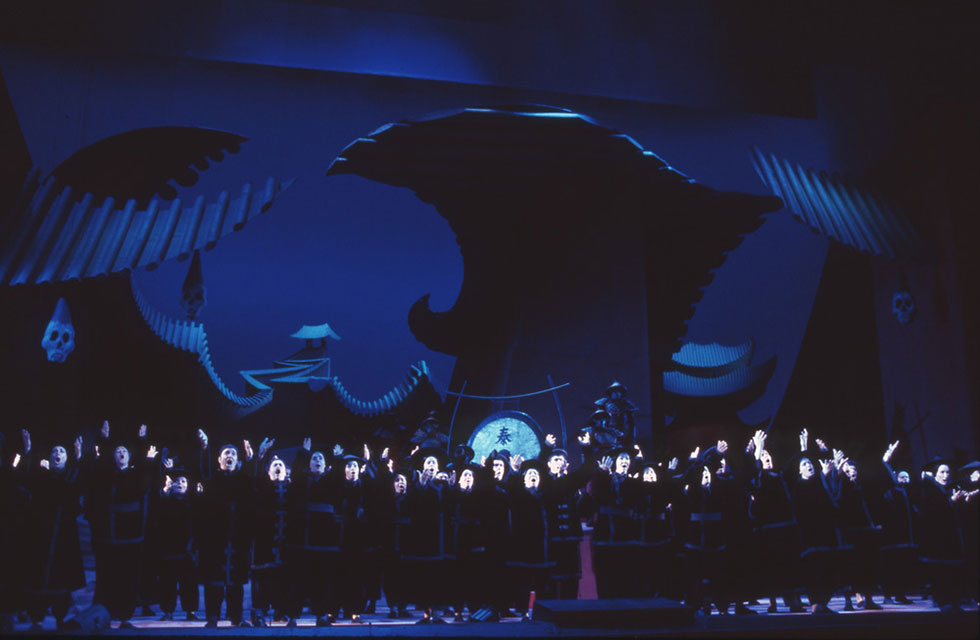Music
Curtain up!
Music plays a major role in David Hockney’s work. The artist likes to listen to music while driving, and his stage sets for operas have influenced his art.
A Rake’s Progress
David Hockney used several different media to engage with William Hogarth’s pictorial cycle A Rake’s Progress (1732–1734).
For the 1975 Glyndebourne Festival in East Sussex he designed the stage set for Igor Stravinsky’s The Rake’s Progress. Hockney’s stage set is linear in composition and seems like a huge etching. The angularity of the forms corresponds to Stravinsky’s modern composition.
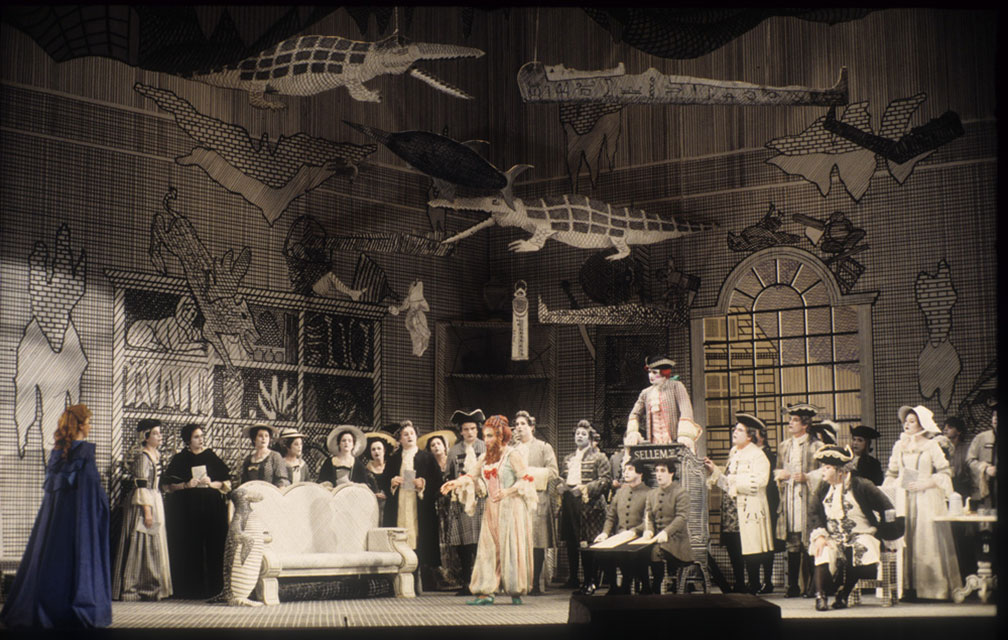
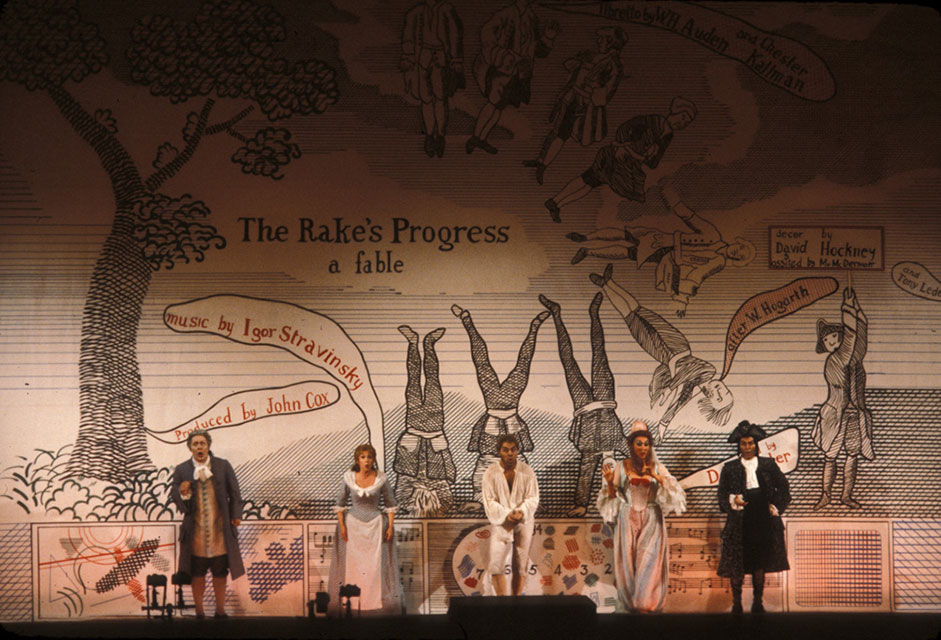
Like Stravinsky, Hockney too is enthusiastic about William Hogarth’s 18th century social satire. The Rake’s Progress is about a rich merchant’s son, Tom Rakewell, who squanders his whole heritage and ends up in a mad house. The satirical drawings by Hogarth deal with sex, money and violence and were a moral appeal in the face of a society he felt had become coarsened.
In the 1960s Hockney used the story to process his experiences as a young gay artist in the metropolis of New York: He was seduced by the countless temptations of the big city – sporty young men, alcohol, political demonstrations and religious services with music. Reality and fantasy mingle. Hockney wanders around the city as a bust with neither arms nor legs. Soon the artist runs out of money and the promises of the metropolis metamorphose into images of unease.
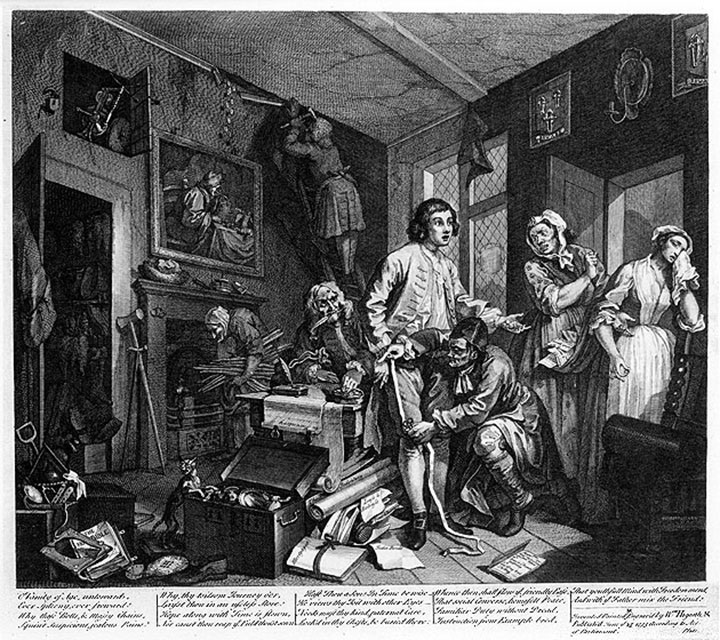
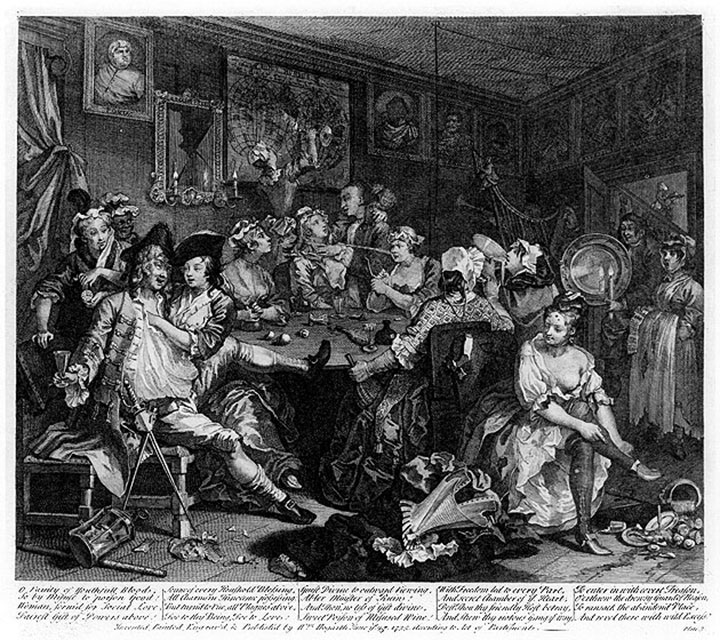
Mozart’s Magic Flute
In 1978 Hockney was commissioned by the Glyndebourne Festival to design the costumes and sets for the classic opera per se: The Magic Flute by Wolfgang Amadeus Mozart. For this Hockney allowed himself to be inspired by the 14th century Italian painters Giotto and Paolo Uccello. He also adopted elements of Egyptian painting.
“The problem is: how can you make a deep space by using illusion? Therefore the light is totally part of the design, or it became it to me, because the lights control the image.”
David Hockney
From Stage Set to Abstraction
For the sets for Richard Wagner’s opera Tristan and Isolde at the Los Angeles Opera in 1987 and Giacomo Puccini’s Turandot at the Lyric Opera of Chicago in 1992 Hockney made great use of light as a design medium. Light amplifies the illusion of depth of space. Unlike in his earlier stage sets, Hockney’s formal idiom here is no longer graphically linear, but rather dynamic, bordering on the abstract. In the 1990s Hockney transferred the sculptural forms from the opera stage to his art, which became increasingly more abstract at that time.
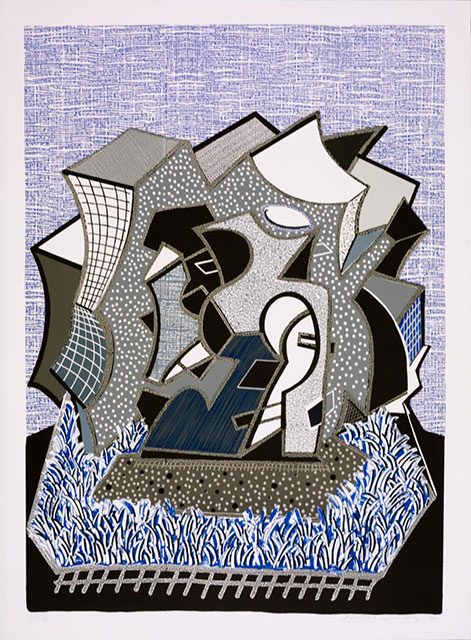
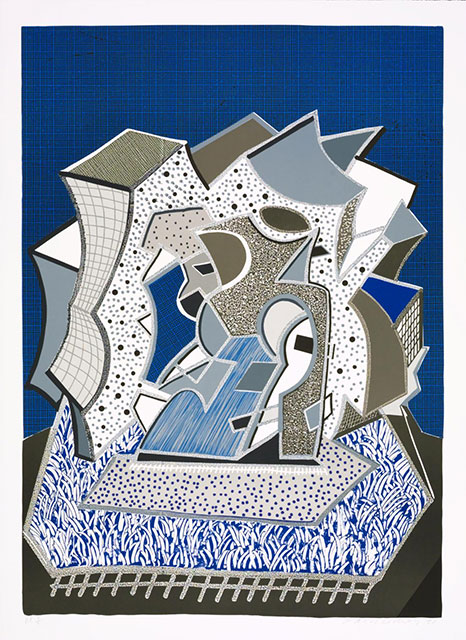
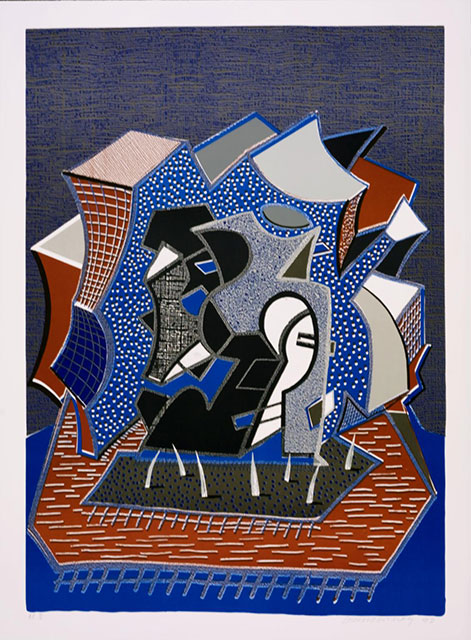
Hockney’s Soundtrack
Listen to David Hockney’s favourite music and a selection of songs that suit the works of this multifaceted artist perfectly.
